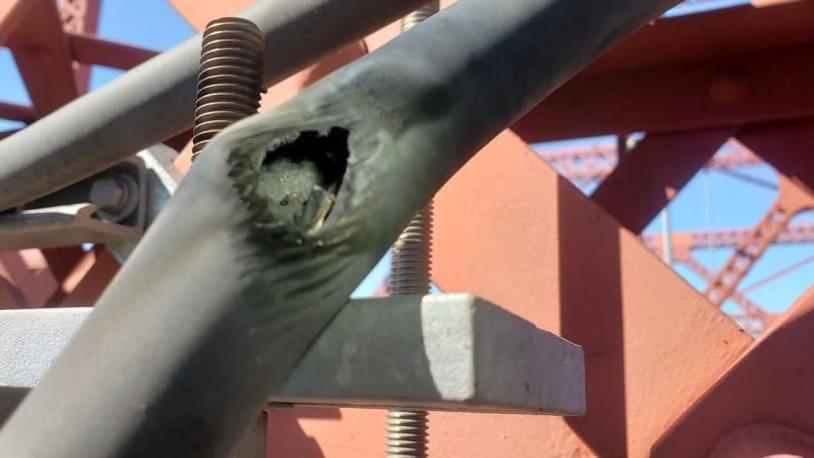
10 minute read
Noor
Dangerous Heat Wave Is Literally Melting Critical Infrastructure in the Pacific Northwest
The heat-caused damage in the Pacific Northwest is a stark sign of how screwed our infrastructure is when it comes to climate change.
Advertisement
Dharna Noor
6/28/21
Power cables are melting. School districts are closing. Asphalt is too hot to touch. The heat wave roasting the Pacific Northwest is putting infrastructure at risk, and temperatures are expected to continue to rise on Monday. The failures show the staggering toll the climate crisis is already taking—and they’re a stark warning for the future if we don’t shore up roads, buildings, and other infrastructure central to modern life.
A region from California to British Columbia saw record-breaking temperatures over the weekend due to a sweltering heat dome. The heat is so rare that it’s expected just once in 1,000 years. That’s left the region largely unprepared for the intensity and relentlessness of the heat. Infrastructure, from schools and streets to air conditioning and the power grid, is constructed with the Pacific Northwest’s typical moderate heat in mind. But that’s the climate of the past, and the one of the future is just getting started.
The temperature records falling now will become more commonplace in the future. Without adapting, more and more people will be at risk of suffering. The safest place to be amid that level of oppressive triple-digit heat in the Pacific Northwest is indoors with the air conditioning cranked.
But since they’re built for cooler weather, more than half of all homes in Seattle aren’t outfitted with cooling technology at all.
“Currently, we have a relatively limited incorporation of cooling technologies in [Pacific Northwest] “Currently, we have a relatively limited incorporation of cooling technologies in [Pacific Northwest] households,” Vivek Shandas, a professor of households,” Vivek Shandas, a professor of climate adaptation at Portland State University, wrote in an climate adaptation at Portland State University, wrote in an email. “While most commercial [buildings] and businesses have them, people don’t generally sleep in those email. “While most commercial [buildings] and businesses have them, people don’t generally sleep in those spaces. Households in Seattle have about 30% central AC, and in Portland it is about 60%, spaces. Households in Seattle have about 30% central AC, and in Portland it is about 60%, with rural areas having far less. Those with pre-existing health conditions, older adults, and also anybody living in apartment existing health conditions, older adults, and also anybody living in apartment complexes are also very vulnerable to this heat.” complexes are also very vulnerable to this heat.” Heat waves are the deadliest form of extreme weather, and this one is especia Heat waves are the deadliest form of extreme weather, and this one is especially dangerous because the high lly dangerous because the high temperatures are persisting overnight in the region. By 8 a.m. Monday morning, it was temperatures are persisting overnight in the region. By 8 a.m. Monday morning, it was already 90 degrees Fahrenheit (32.2 degrees Celsius) in Seattle. Nights usually provide important relief from the scorching elsius) in Seattle. Nights usually provide important relief from the scorching daytime temperatures, but that’s increasin increasingly not the case. Many are looking to find air-conditioned hotel rooms in search of respite, but rooms are conditioned hotel rooms in search of respite, but rooms are filling up fast. They may also be inaccessible to some particularly vulnerable populations, like people experiencing homelessness. may also be inaccessible to some particularly vulnerable populations, like people experiencing homelessness. Cities are also opening up more public more public cooling centers, but capacity is limited. Another option, of course, is , but capacity is limited. Another option, of course, is to buy an air conditioner, but supplies are running low: Salem, Oregon ran out of air conditioning units to to buy an air conditioner, but supplies are running low: Salem, Oregon ran out of air conditioning units to buy before the heat wave even began. This also may not be possible for everyone. . This also may not be possible for everyone. “The procurement and use of cooling technologies are generally expensive, and even “The procurement and use of cooling technologies are generally expensive, and even if people are able to purchase them, then running them is also expensive, which is cost purchase them, then running them is also expensive, which is cost-prohibitive for those who are struggling prohibitive for those who are struggling with bills,’ said Shandas.
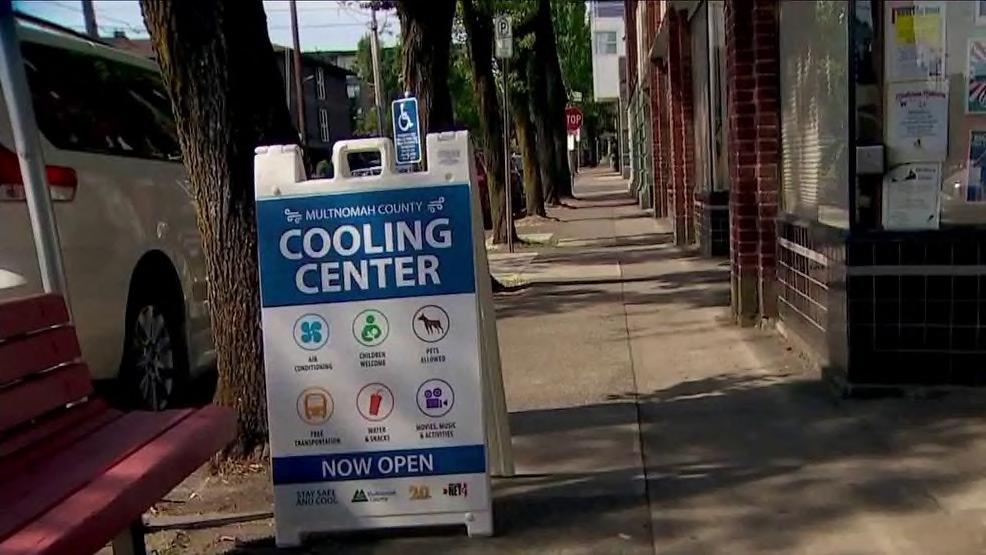
Outside the home, the heat is posing infrastructural issues, too. On Sunday, Portland was forced to Outside the home, the heat is posing infrastructural issues, too. On Sunday, Portland was forced to suspend its streetcar service because the searing temperatures suspend its streetcar service because the searing temperatures melted the line’s power cables melted the line’s power cables. That’s particularly bad news for those who don’t have cars and rely on the streetcar service to get to That’s particularly bad news for those who don’t have cars and rely on the streetcar service to get to work or to cooling centers. “Additionally, the ability to use a car when it’s hot requires an engine that doesn’t overheat, and “Additionally, the ability to use a car when it’s hot requires an engine that doesn’t overheat, and often communities with older or vulnerable engines may not be able to find cooling resources, such often communities with older or vulnerable engines may not be able to find cooling resources, such as cooling centers that are far from their home as cooling centers that are far from their home and away from public transit,” said Shandas. and away from public transit,” said Shandas.
The absurdly hot weather is also putting additional stress on power grids since more people are inside running air conditioning and other equipment. With more heat on the way on Monday, the pressure could get even worse.
“Power grids are designed around historical norms, and when we get these abnormal temperatures, the strain on the grid is unprecedented,” said Shandas. One dozen power outages have already occurred in the Northwest amid the heat wave, and Shandas noted that these shutoffs “then create potential impacts on accessing cooling resources, particularly at night when people are most vulnerable to urban heat.”
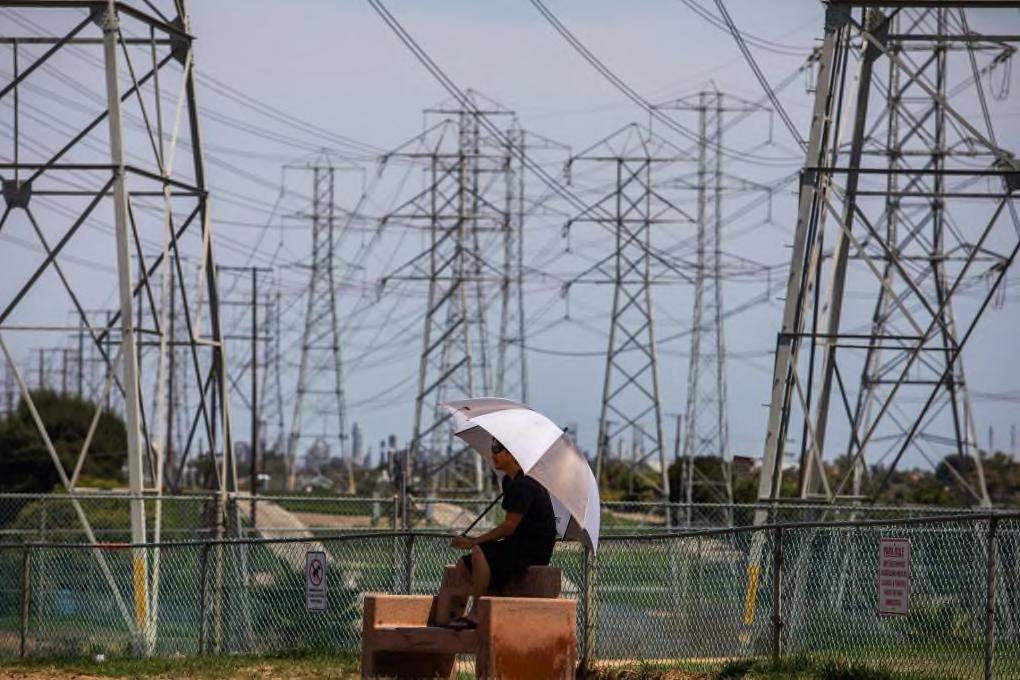
The heat wave is also affecting places as far north as Canada. On Sunday, the country saw its all-time high when Lytton, British Columbia reached at 115 degrees Fahrenheit (46.1 degrees Celsius). This heat has forced 15 school districts to cancel full days of elementary classes because they lack the infrastructure to keep students cool enough to learn.
Climate scientists have warned that these heat waves would begin affecting traditionally cool places. Now, it’s clear they’re here and that infrastructure needs major upgrades to withstand these new normals.
“Short term: we need to get people cooling resources—whether that be accessing cooling centers, AC technologies including batteries based on solar, and people to become more familiar with what is vulnerable near their homes,” said Shandas. “Medium-longer term, we need to prioritize historically marginalized populations in funding cooling systems, including the creation of codes that require developers to install cooling technologies into affordable buildings.”
Electricity, school systems, and other infrastructure must also be overhauled to withstand the pressures of our climate future, and it’s increasingly clear that the time to do so is now. American infrastructure currently has a C- grade from the American Society for Civil Engineers, and that’s even before accounting for the climate crisis is putting further stress on it. Jean Su, the energy justice program director at the Center for Biological Diversity, noted in an email that among other things, the heat wave—as well as other extreme weather catastrophes like the Texas blackout earlier this year—show the need to “rapidly transition off of fossil fuels and build a resilient energy system that starts with rooftop and community solar and storage.”
Congress has a chance to make crucial investments to prepare infrastructure not just in the Northwest but across the country for the cliamte crisis in the coming infrastructure bill. But in negotiations, senators seem to be letting issues like climate adaptation fall by the wayside in favor of nebulous concepts like bipartisanship. On Monday, 500 youth activists with the Sunrise Movement and Rep. Jamaal Bowman rallied outside the White House to demand an infrastructure package that adequately addresses the changes needed to keep people safe in our changing climate.

PHOTOS: The Record-Breaking Heat Wave That's Scorching The Pacific Northwest
June 29, 2021 Josie Fischels
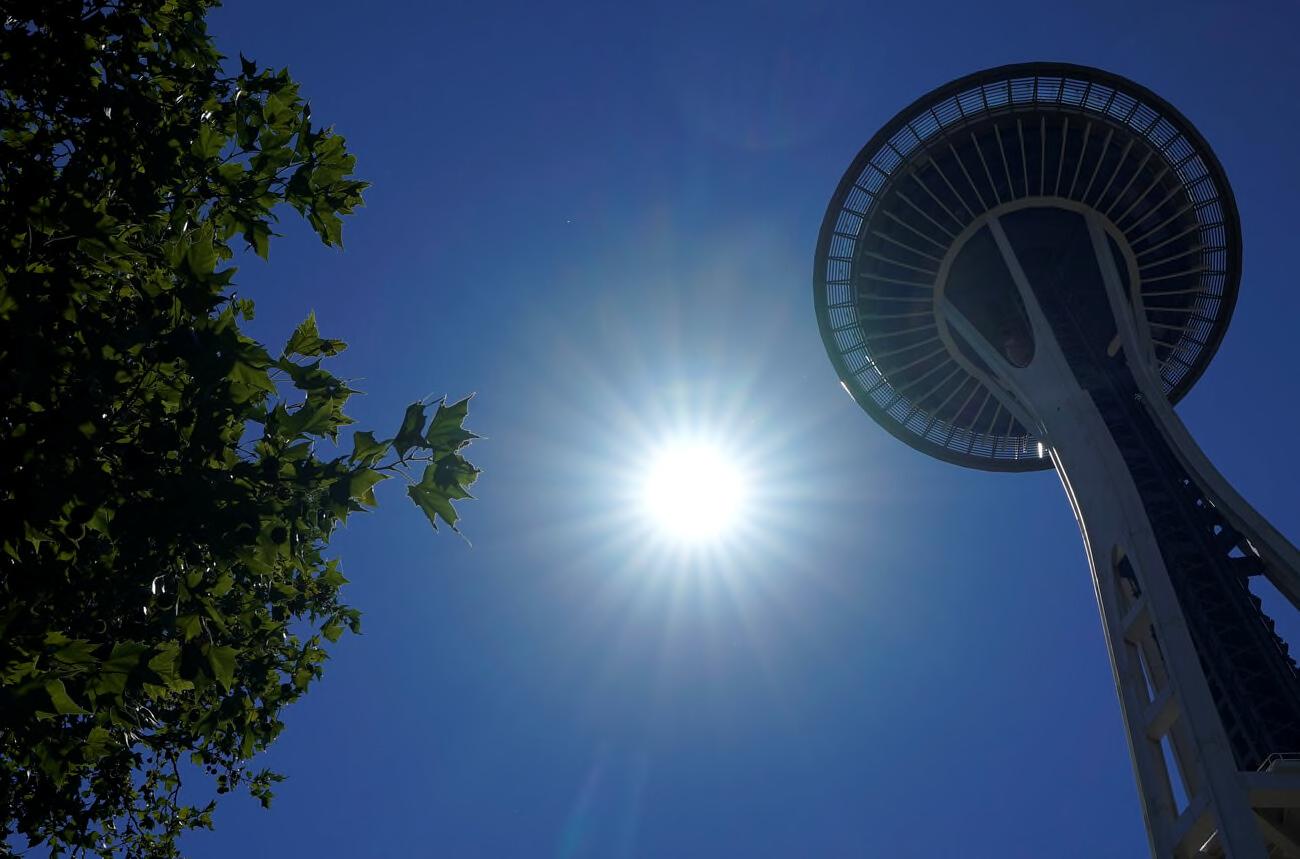
The sun shines near the Space Needle, Monday, June 28, 2021, in Seattle. Seattle and other cities broke all-time heat records over the weekend, with temperatures soaring well above 100 degrees. Ted S. Warren/AP
Record-breaking temperatures have soared well past 100 degrees across the Pacific Northwest, where the area is trapped beneath a blistering "heat dome."
In a region where average temperatures are closer to the 70s this time of year, houses can be seen with blackedout windows covered with blankets to help with the heat. The area's normally mild summers mean many households don't have air conditioning.
The historic heatwave is bringing with it fears about what could follow over the rest of this summer.
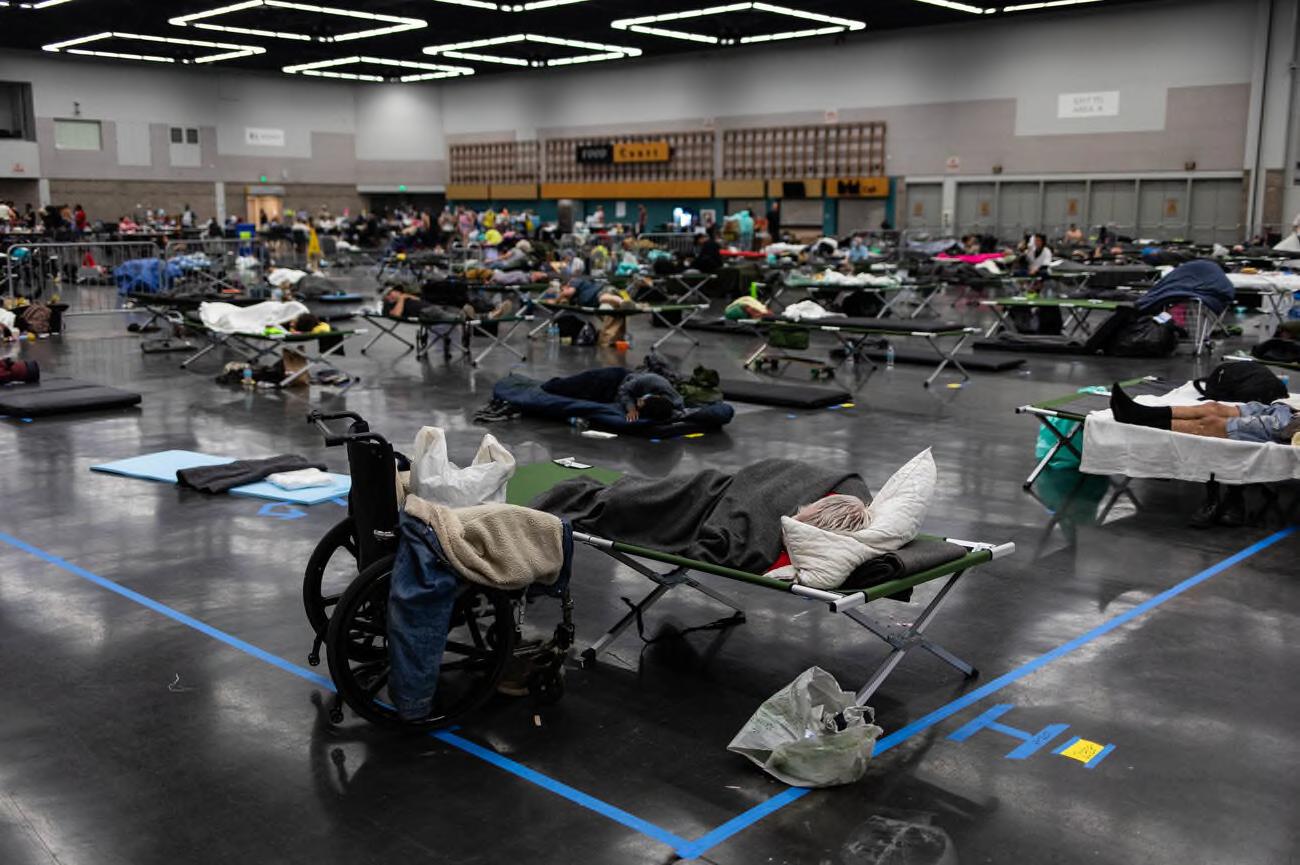
The Pacific Northwest has a lack of air conditioners as hot weather is not typical. Here, Portland, Oregon residents stay at a cooling center. Maranie Staab/Bloomberg via Getty Images
Records set one day have been broken the next.
Records have been shattered daily in parts of the Northwest, including Portland and Seattle. Portland broke records three days in a row, hitting 108 on Saturday, 112 on Sunday and then 116 on Monday.

Seattle reached 108 degrees on Monday during the heat wave in the Pacific Northwest. Here, a mother and daughter carry umbrellas to shield from the sun. John Froschauer/AP
In Seattle, the temperature rose to 108 on Monday. In Pasco, Wash., the mercury climbed to 118 degrees, the hottest temperature the state has recorded since 1961.

Portland recorded three of its hottest days in history last Saturday and this Sunday and Monday. Here, a couple and their dog lay in the shade during the heat wave. Maranie Staab/Bloomberg via Getty Images
In some places, the heat is so intense it has even melted power cables. In downtown Portland, the Portland Streetcar service shut down on Sunday, posting a picture on Twitter of a power cable with a hole burnt into it.
Roads have buckled under the heat in Portland
Pacific Northwest infrastructure is cracking — literally — under the pressure. In Everson, Wash., temperatures have caused the pavement to soften and expand. This can create rutting, buckling, and potholes, particularly in high-traffic areas.
State Route 544 milepost 7 near Everson, Wa is currently closed. The asphalt roadway is buckling and unsafe for travel. WSDOT is advised and detours are currently being set up. BL
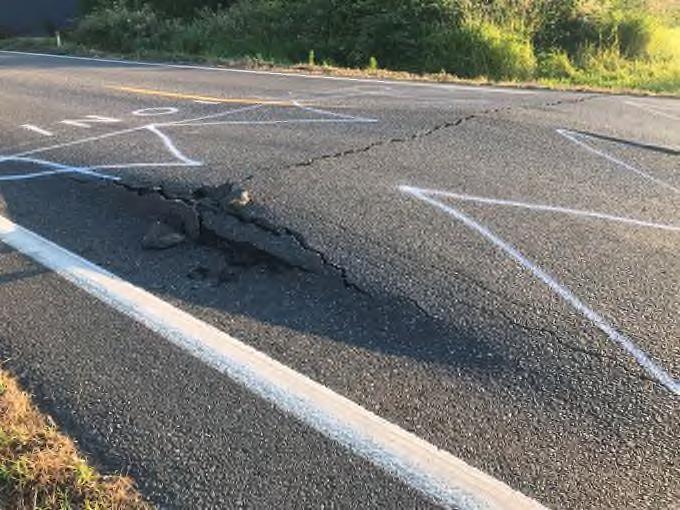
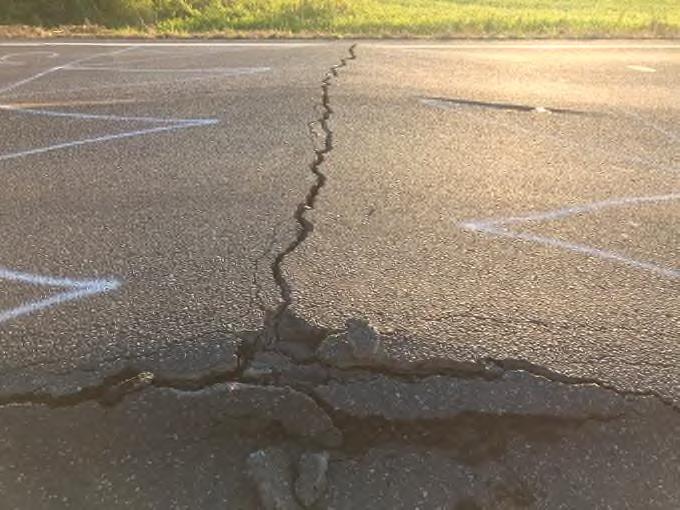
Drought has created a vicious dry cycle
Widespread drought extending from the West and all the way into the Great Plains has only worsened under the heat dome. In the Northwest, a typically wet area, abnormally dry and drought conditions have expanded in a matter of weeks. On June 22, the U.S. Drought Monitor reported 79.8% of the region was in drought just ahead of the fire season.
Scientists say the warming climate is making both heat waves and droughts more frequent and intense.
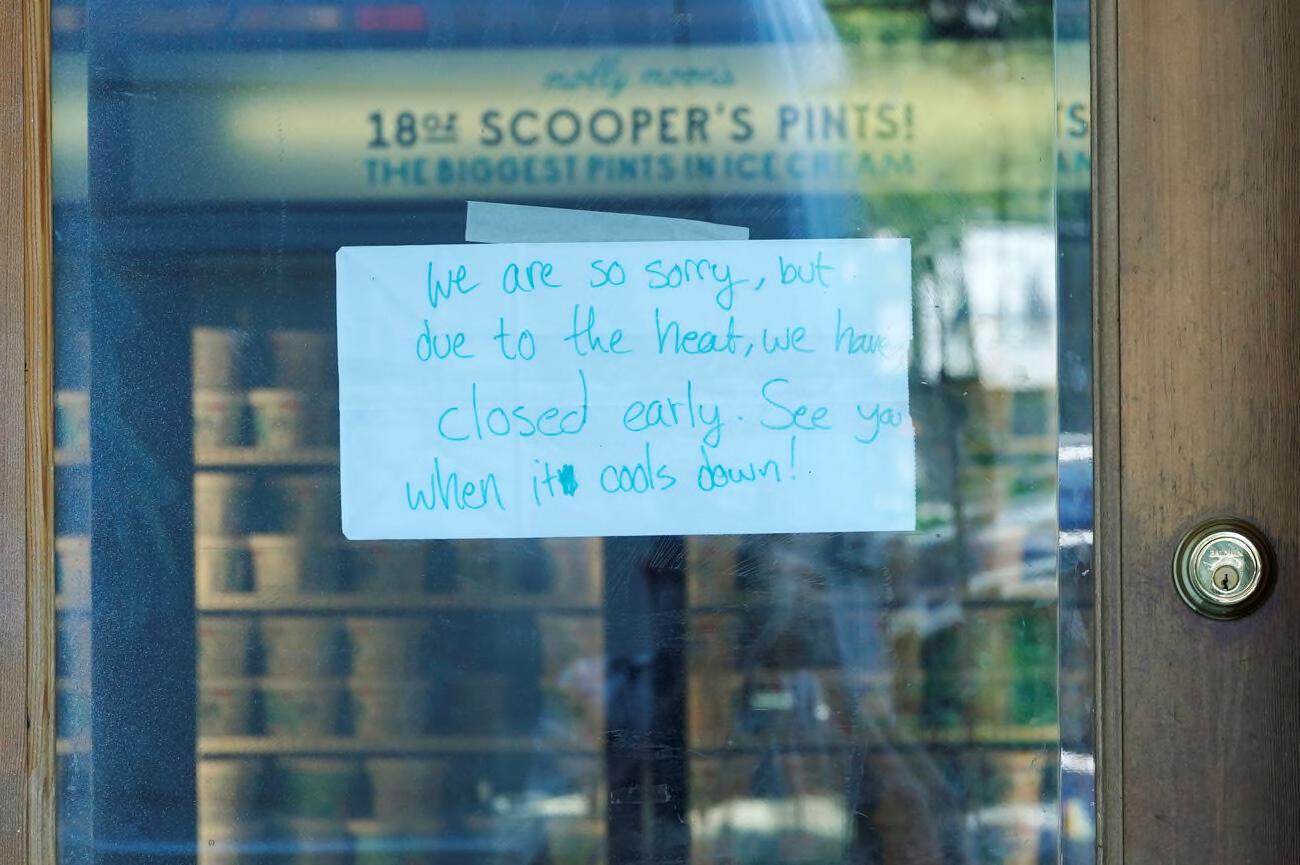
A sign is shown on the door of a Molly Moon's Ice Cream store in Seattle's Capitol Hill neighborhood. The store was closed Monday due to excessive heat. Ted S. Warren/AP





